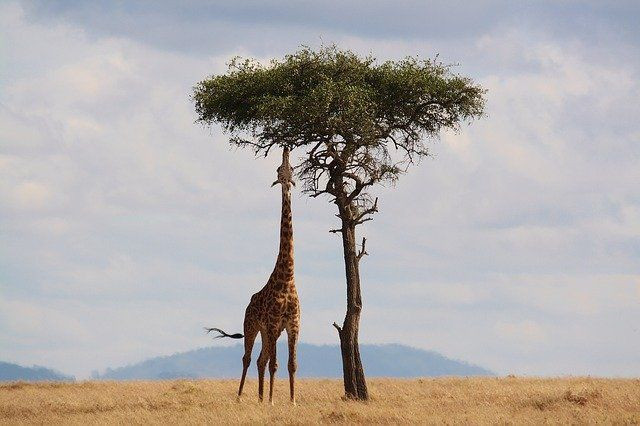With Dwindling Populations, Giraffes Inch Closer To Protection: 'Long Overdue'
KEY POINTS
- Giraffe populations have decreased almost 40% in the past decades
- The FWS agreed to decide by 2024 if giraffes need ESA protection
- The U.S. is said to be among the 'top importers and sellers of giraffe parts'
Giraffe populations have been dwindling in recent decades. This week, the iconic creatures may just be a "long overdue" step closer to being protected under the Endangered Species Act (ESA).
Conservation and animal protection groups, including the Center for Biological Diversity (CBD), had petitioned the giraffe or "all giraffe subspecies or distinct population segments" to be protected "at least as threatened" way back in 2017. The groups cited substantial scientific evidence that the creatures are "in danger of extinction." However, the U.S. Fish and Wildlife Service (FWS) reportedly missed the legal deadline to make a decision, the CBD noted in a news release.
This led the groups to sue the FWS in 2021 for failing to protect giraffes. In response, the FWS on Tuesday agreed to decide if giraffes need to be protected under the ESA, with a deadline of November 2024.
"This is a crucial step for giraffes, whose populations are dwindling while products made from their skins and bones flood into the United States," Tanya Sanerib, CBD international legal director, said in the organization's news release, adding the agreement was "desperately needed."
"But during an extinction crisis, it shouldn't take litigation to get action under the Endangered Species Act. We should be racing to save every species we can," Sanerib said.
Giraffe populations have decreased almost 40% in the past decades, the organization noted. Recent reports showed poaching and wildlife trafficking as contributors to the decline, noted the African Wildlife Foundation, adding that illegal hunting is among the four main threats to the species along with habitat loss, ecological changes and civil unrest.
Giraffe populations have declined nearly 40% in the past three decades. Following a Center lawsuit, @USFWS now has until Nov 2024 to decide if these long-necked mammals need federal protection. "This is a crucial step for giraffes," said @ts4biodiversity. https://t.co/l3cZpIyyXQ
— Center for Biological Diversity (@CenterForBioDiv) May 31, 2022
The U.S. is actually among the top importers and sellers of giraffe products — from giraffe parts such as their feet and heads to items made from them such as giraffe bone carvings, boots, pillows and jackets.
In 2018, an undercover investigation by the Humane Society of the United States found that giraffe parts are "easily available" for sale through at least 51 dealers across the U.S. Some of the sellers reportedly even claimed that giraffes had to be killed because they are dangerous.
According to the CBD, safeguards in countries with a "thriving market" for giraffe body parts, such as the U.S., are "crucial" to protecting these creatures. Before the deadline, the agency is set to review the status of giraffes to determine whether listing them as threatened or endangered is warranted or not.
"This was a long, overdue step to protecting giraffes. The United States is a top importer and seller of giraffe parts—including heads, legs and feet, tails and skins—and a leading contributor to the threat of extinction of the species," Adam Peyman, Humane Society International wildlife programs director, said as per the CBD news release. "The demand for these items is deplorable and an Endangered Species Act listing will strengthen the ability to combat this horrific domestic market."

© Copyright IBTimes 2025. All rights reserved.






















